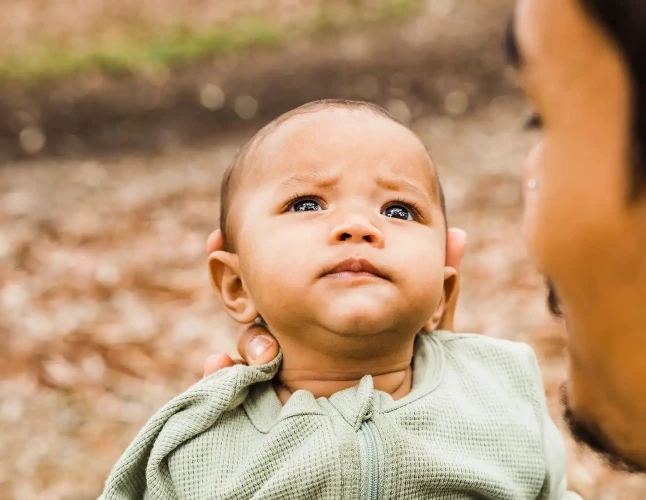
Reading babies' cues Module 5

Supporting whānau to read babies' cues about how they are feeling and what they need from us.
Even very young babies are able to let us know what they need and want. We may not immediately understand what they're trying to say, but it's up to us to learn their special language. We call this reading babies' cues.
Learning goals
- Recognise what babies are trying to communicate to us.
- Be able to respond positively.
Session plan
Begin the session with an appropriate settling in time – for example, karakia, gathering thoughts, waiata, simple hellos. This is an opportunity for people to share what’s going on for them, if they wish.
Introduce the session topic - today we will learn how to read babies' cues in order to understand how they are feeling and what they need from us.
Mix and match from the pūtea of related workshops below. Consider the following when selecting which ones will work best for your group:
- the size of your group
- how much time you have
- the ages of the participants’ children
- factors such as literacy levels and the particular needs of the individuals you are working with.
Background information
- A baby will have their own way of letting parents and whānau know when they need something.
- It takes time, observation and patience to learn your baby’s ways of communicating their needs.
- Babies communicate using their facial expression, body movements and sounds, usually cries.
- Cries usually happen after other signals haven’t worked, so it’s worth learning about a baby’s early signs that they need something.
Signs a baby may be hungry
These might be:
- smacking or licking their lips
- sucking on whatever’s handy
- rooting around on the chest of whoever is holding them
- having their arms crossed over their chest and hands curled into a fist. (When they’re full, their arms become relaxed and fists uncurl.)
- crying – short, low-pitched cries.
Signs a baby may be ready to talk, sing or play with you
These might be:
- smiling, cooing and reaching towards you
- eyes bright, open and looking interested – they may even have raised eyebrows
- relaxed and open (un-fisted) hands.
Signs a baby may just need a change or a break
These might be:
- looking away and not making eye contact
- breathing faster
- holding a hand behind their head, to their ear, or out in a ‘stop’ position
- arching their back, as if they are trying to get away
- kicking their legs
- lips pressed together
- crying
- falling asleep.
Too much going on
There are many new things in the environment for a young baby to deal with, especially after the comfort and protection of the womb.
Babies need a certain amount of stimulation to experience and learn from their environment, but it’s also important to be aware of ‘sensory overload’. This happens when there’s too much stimulation, or a type of stimulation that’s hard for baby to cope with.
The signs that baby is experiencing sensory overload are similar to their signs that they need a break. If those signs are missed or not responded to, they may intensify. You might see more:
- crying
- withdrawing – turning away
- irritability, and difficulty consoling or comforting them
- tensing or arching of their body
- shutting down, ignoring what’s going on, or falling asleep.
Sensory overload causes a baby to become anxious, and they will try to avoid those stressful feelings. Too much stress, too often, can be harmful. Babies may cry excessively, withdraw from many interactions, sleep too much, or suffer from digestive problems.
The ‘Whānau say’ sections in the Tākai Whakatipu booklet Te Pihinga 1 emphasise that observing and learning what baby is trying communicate helps whānau to keep things calm and soothing.
Resources
Tākai resources
Baby wall frieze [PDF, 2.2 MB]
Whakatipu booklet Te Pihinga 1(external link)
Order free printed resources(external link)
Related articles
Watching and listening to baby
Other resources
Video: Early days - When your baby cries | Tākai (YouTube)(external link)
Understanding what your baby wants or needs | Whānau Āwhina Plunket(external link)








